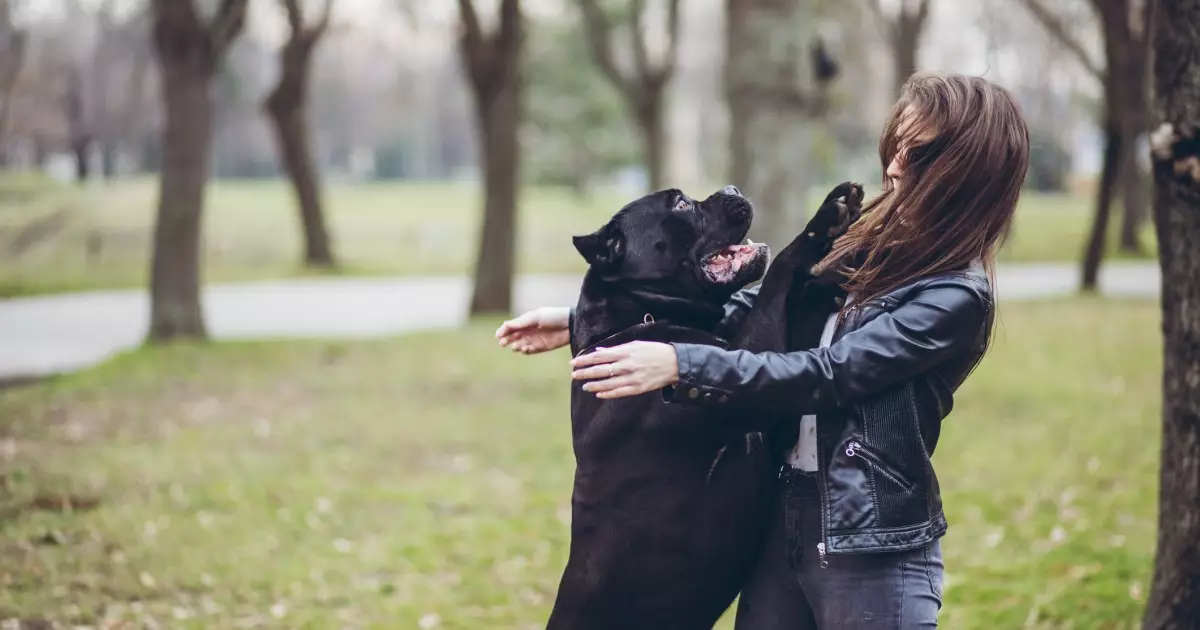Dog owners frequently encounter the charming but often maddening behavior of their furry friends jumping up for attention. While it can be endearing to see a puppy leap with enthusiasm, the same behavior becomes far less adorable when exhibited by a full-grown dog. Understanding the motivations behind this instinctive action and employing methods to manage it can lead to a more harmonious household.
Jumping up is a natural instinct for dogs that serves a dual purpose. First and foremost, this action is a means of expressing excitement, particularly when greeting their favorite humans. Dogs are social animals, and their affection often manifests physically. Secondly, jumping is a way for dogs to get a closer sniff of their human companions, taking in distinguishing scents from their faces that can provide a wealth of information.
For puppies, this behavior is usually encouraged. Family members often greet them with open arms, facilitating their excitement and creating a positive feedback loop. The delicate nip of a puppy’s affection, coupled with its small size, often leads to owner laughter and affection. Unfortunately, this acceptance can sow the seeds for trouble when that same dog matures into a larger adult. What was once endearing in a small pup may become problematic when the dog weighs over 70 pounds and has no regard for personal space.
To avoid the pitfalls of this jumping behavior, it is crucial to start training early. The objective is to help dogs understand that jumping does not yield the attention or affection they seek. This can be especially vital when the excitement of a homecoming is at its peak. Rather than giving in to their demands, owners must consistently reinforce the message that jumping yields no reward.
When a dog jumps up, the correct response is to withdraw physical contact and attention. Turning away, crossing your arms, and avoiding eye contact can send a clear signal. From there, instructing the dog to perform a more desirable behavior, such as sitting, is a valuable tactic. When the dog complies, it is essential to reward them with gentle praise or attention, affirming the behavior you want to encourage. Patience and consistency in this process are indispensable; this may take weeks or longer, especially for dogs accustomed to jumping.
If jumping is a recurrent issue during specific events, like returning home from work, a structured approach to greetings can be beneficial. Practicing the arrival routine multiple times a day—even if just stepping outside momentarily—allows the dog to learn appropriate greetings in a controlled environment. Consistency in reinforcement is crucial; if you always reward jumping at one time, doing so inconsistently during other instances will confuse the dog and hinder learning.
One common mistake that owners make is rewarding their dogs for jumping without realizing it. Enthusiastic greetings often lead owners to inadvertently encourage the behavior by engaging with their dogs during these moments of excitement. To combat this, it is crucial to establish ground rules where the dog must “keep four paws on the floor” before any interactions take place.
Adapting to Adult Dog Behavior
For those with older dogs who have ingrained jumping habits, it’s never too late to modify behavior. Greeting the dog at their level can be an effective way to mitigate jumping. Instead of greeting from a standing position, lowering oneself to the dog’s height can help de-escalate excitement levels. Moreover, presenting treats on the ground rather than above the dog’s head redirects their attention downwards, which can minimize jumping attempts.
Additionally, it is advised to solicit guests to follow the same protocols to prevent reinforcing the jumping behavior. If friends and family adhere to the same consistent guidelines, the effectiveness of the training will improve dramatically.
Concluding Thoughts
In essence, while a dog jumping up can initially feel like a display of affection, the goal should be to cultivate a more polite greeting behavior that allows for genuine expressions of love without infringing on personal space. Through consistent training from a young age and thoughtful interaction strategies, owners can teach their dogs when and how it’s appropriate to express their joy. Building impulse control through obedience training and being clear about expected behaviors will enhance the bond between dogs and their owners, making coexistence a more pleasurable experience for both parties.

